
views
Creating Your Yurt

Build a yurt if you have the time, resources, and carpentry skills. Building a yurt requires many of the same processes as building a tiny house; the main difference lies in the placement of your yurt (secluded in nature, rather than near civilization). If you're thinking of building a yurt, look into different yurt patterns online, and watch some yurt-building tutorials on YouTube to determine whether or not you're up for the challenge.
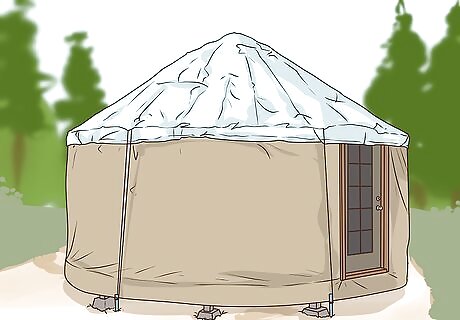
Buy a yurt if you’d rather not build your own. If you’re overwhelmed by the task of building a yurt from scratch, you can buy yurt-building kits or pre-made/used yurts. Look online for a yurt or yurt-kit that will suit your lifestyle. Some companies, including Pacific Yurts and Rainier Yurts, are renowned for making high quality yurts. Yurts tend to cost around US$2000 to $6000 to purchase in kit form, and take about two days to assemble.

Choose a safe and legal land area. Before setting up your yurt, be sure that the area is legal for setting up camp. If you do not own the land where you want to place your yurt, you may need planning permission, so check with your local municipality for the ins and outs of part- or full-time yurt living. You should also make sure that the regional area is not at risk for flash flooding or excessive snowfall. Opt for a location below the brow of a hill. If possible, setting up your yurt at the base of a large hill will help protect your yurt from winds.
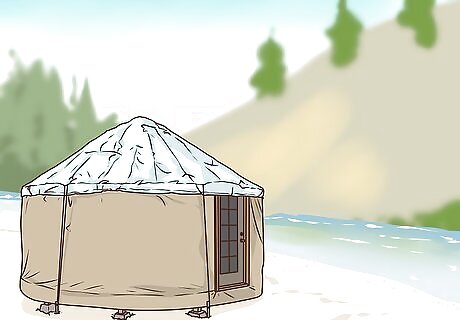
Place your yurt near a clean water supply. For the sake of cooking and cleaning, it’s best to have your yurt situated near a clean water source. If this isn’t possible, consider investing in a small rainwater tank, or an appropriate system for roof-top water collection.
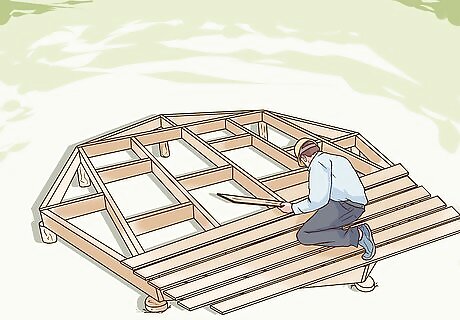
Prepare a base for your yurt. Most yurts are built over decks, cinder block piers, or some other solid structure that elevates the floor of your dwelling from the earth. If you can afford to buy or build a deck, these structures are recommended for their dual function as places to sit, barbecue, and hang clothes. Consider building a portable deck. That way, if you get the nomadic itch, your deck can come with you.
Installing Basic Necessities

Equip your yurt with basic furniture. Although your yurt is no mansion, you’ll want to furnish it with several pieces of useful, comfortable items to accommodate your daily life. Consider adding a table and chairs, a bed, a bookshelf, and a comfortable reading chair. If you don't want to add a real bed, use a camp stretcher, foldaway, or inflatable bed.
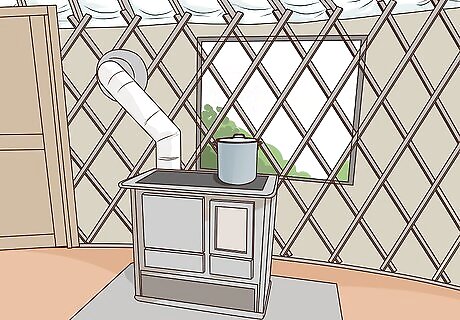
Add a cooking apparatus. You'll need to eat, and even if much of your food is from the result of foraging, you'll also need to cook. Find a suitable gas or wood fueled stove that can double up as a heating item in the yurt, such as a pot-bellied stove. Be sure to vent the stove outside through one wall of the yurt, as unvented stove will create dangerous fumes within the yurt. You might need a professional to help you install this part of the yurt. Consider bringing a propane barbecue to keep outside your yurt as an additional tool for cooking.
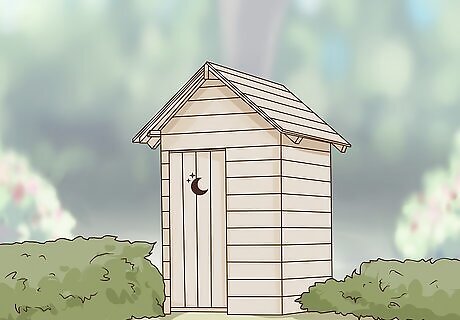
Create an outhouse. You will need a way to use the toilet, and while some people opt for outdoor plumbing, natural forms of human composting are more common amongst yurt-dwellers. It's best to place your toilet downwind from the yurt or some distance from it so that the odor and flies don't enter your yurt.
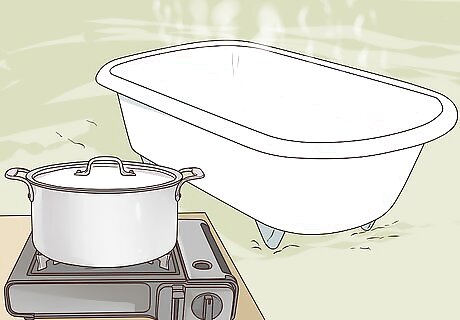
Construct a bath or shower area. You can create a simple shower contraption by rigging a tree with a bucket or plastic bag, and using solar power to heat the water. You can also bath in clean streams or lakes nearby, or by heating water and filling a large tub near your yurt. It's also a good idea to have a general washing area for dirty gear and items. Most clothes items can be washed by hand until they're heavily soiled, so you can supplement hand-washing with monthly trips to a laundromat.

Get connected to the internet. If you want, there are a number of possible ways to get internet to your yurt, including cable, satellite, rural broadband on an FM signal, or 3G Wi-Fi. Select the option most appropriate for your location.
Living Sustainably
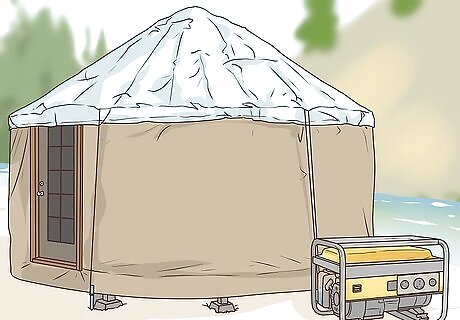
Connect to a main source of energy. You can bring electricity to your yurt by running a line from a main supply to your yurt, or by using a generator. Because this option tends to be expensive, and requires the greatest volume of electrical power, it is the least advisable option for powering your yurt.

Utilize natural energy sources. If you have access to solar or wind energy devices and storage batteries, these are great tools to power your yurt. Although solar/wind power devices are often expensive, these investments are more environmentally friendly than generators.
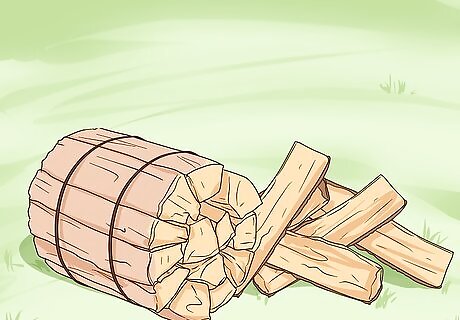
Find a source of lumber and build outdoor fires. Building fires can provide a steady source of energy for heating your yurt and cooking meals. If you’re using wood as your primary source of heating energy, and you’re living in a colder environment, expect to go through about 3.5-4 cords of wood. Building fires can also help supplement any of the other energy sources listed above.
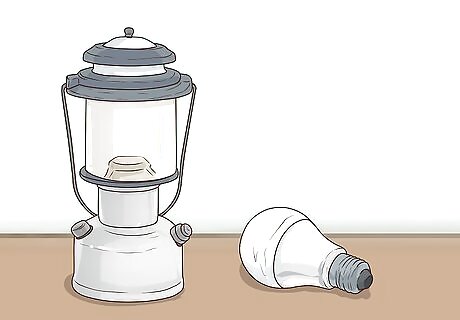
Bring an electric light-source. While the dome at the top of your yurt will allow for plenty of light during the day, you’ll need a light-source for nighttime hours. Find suitable gas, battery, or LED lamps that are safe to have inside tents, and keep some candles nearby for emergencies.
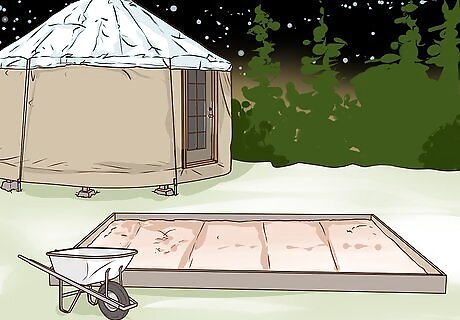
Grow vegetables next to your yurt. If you’re committed to a sustainable lifestyle, a well-maintained vegetable garden can provide a complete food supply for you and your other yurt residents. You might also consider a keeping a few animals as well, for milk, eggs, and even meat. Compost all your kitchen and food scraps and use the compost pile to nourish your garden.

Enjoy living in your yurt! Your yurt will be a cozy haven away from the hustle and bustle of urban lifestyles, and you’ll soon learn to appreciate the joys of self-sufficiency that come from living in nature.


















Comments
0 comment